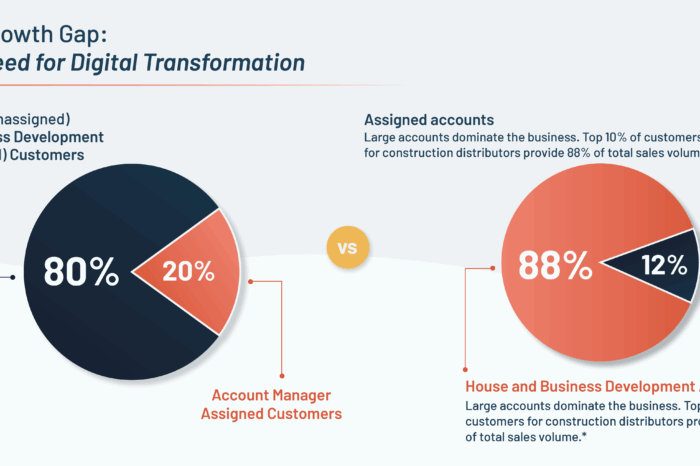Who is the Local CUSTOMER?
While many distributors claim to be the customer because they send the money to the manufacturer, and in some cases make the brand decision of what is sold to “the customer”, logic says that the customer is the individual who generates the demand for the product. Without this entity no distributor would request material. In reality, most distributors are the custodian of the material for a relatively short time while it “passes” throughout their warehouses (in the case of “stock material” or while they are processing an invoice (for drop-ship projects.)
I recall from a sales training program years ago that top salespeople ask how / who will be using the product and then learn that this entity is the true customer … either as a decision-maker or an influencer.
Over the past few months Desiree Grace, President Americas, Cembre, covered various elements of the electrical distribution channel and how to optimize performance through localization initiatives. She shared thoughts on:
- Manufacturers working with their reps to develop localized, actionable, plans
- How regional managers can become more valuable
- The benefits, to a manufacturer and for a distributor, on localizing supplier relationships to gain a competitive advantage in a local market place.
Now she shares thoughts on interaction with “the customer.”
Calling on The Customer / End-User
 “As a manufacturer you may say “Isn’t that what I have distributors and rep agents for?” But the market is changing, and it is more important than ever to connect to those making decisions or, in the words of Jerry Maguire, those who can “show you the money.” (There is a reason the upcoming NEMRA conference has a robust session on Demand Generation.)
“As a manufacturer you may say “Isn’t that what I have distributors and rep agents for?” But the market is changing, and it is more important than ever to connect to those making decisions or, in the words of Jerry Maguire, those who can “show you the money.” (There is a reason the upcoming NEMRA conference has a robust session on Demand Generation.)
- Want to add real value?
-
- Know the major end customers and contractors in your market and build a relationship with them, independent of the manufacturer rep (MRA) and the distributor. The benefits are unfiltered information, intimate knowledge of how your products and solutions impact the end user, and, most importantly, their perception not only of your products, but of your MRAs and distributors.
- The key to this, however, is a strong sales organization (regional managers, field sales specialists, business development staff) that is connected and is committed to follow-up. You need the systems in place as a “one and done” visit does more harm than good.
- Lead-sharing and sales process progress tracking is imperative. You MUST partner with your distributor and rep agent on your VIP “key” or “strategic” end-users. With these customers, it really does take a village, or, in this case, a team.
- If you do get unfiltered information from end-users, treat it like the valuable intelligence it is. SHARE it with your relevant internal teams, your MRA and your Distributor. They may have great ideas on product or process improvements that you can apply. For the end-user, when you go back to them with the improvements, that will not only demonstrate you heard the information, but you actually acted on it. This is a great way to differentiate your brand, and to build trust.
-
- If you foster that direct relationship, you can assist in running that business through the “best” distributor for the job. A team approach of Manufacturer-MRA-Distributor for key customers provides multiple touch-points and helps cement a relationship. It creates a positive experience for the end customer. If you question the wisdom of this approach and are concerned about sidelining the MRA or distributor, remember the business still needs maintenance. You cannot do that without the support of the MRA and distributor.
- And, if you do this, it should be with a sniper, not a shot-gun, approach. You cannot call on everyone in a market. Perhaps during your rep planning process you should agree on which accounts your team will approach or perhaps already has relationships with (either via your parent company or personal relationships.)
- Communicate, communicate, communicate. To ensure partnership and trust, let the other stakeholders know you had dinner with the Contractor VP. Let them know you connected your IT person with their IT person, their receiving department with your shipping department. Is the project on hold for some reason? Communicate that. Maybe the 3-way partnership can get the project back on track by offering local, dedicated inventory or staging, for example. A lack of communication and transparency builds mistrust, the last thing you want in the push-pull that is your channel to the end-user.
- Brief educational sidebar: PUSH is through the Channel to the End-User. Manufacturer to Rep Agent to Distributor to End-User or Contractor to End-User. Each member of the Value Chain adds their contribution as the solution makes its way from the Manufacturer to the End-User. PULL is when the Manufacturer communicates directly with the End-User, with the intent to pull them through Distribution and the Rep Agent back to the Manufacturer. Demand Generation is another name for this and is not the same thing as selling direct. Pull is a rising tide that raises all boats.
- Contractors, especially larger, multi-location ones, can also be part of your channel strategy. Nowadays you may be working with a contractor in one geographic market and can bring that expertise, and relationship, into another market. Contractors are not only an end-customer in their own right, they may also be a partner. This is important to understand, and an article unto itself, but do consider them as a potential additive element to your Value Chain, as you attempt to demonstrate value to the end-user.
The value of your brand is only as high as the customer perception of your brand. If you, as a manufacturer, can adapt a more localized approach to your market, you will see the results. These could be:
- Market share gains
- Improved customer satisfaction
- Increased customer retention
- Revenue growth
- Distributor loyalty
- Rep Agent mindshare
All are possible.
Some of the largest, most successful manufacturers in our industry have some version of a localized approach. You, too, can develop practices and policies that allow you to execute on both a localized and a national level. Do a beta in one market area, monitor and measure, and, if you see comparable results to the companies discussed in the introduction, scale and expand.
I wish you luck as you plan for a successful and profitable 2024. If we, together, create positive customer experiences, we will be less vulnerable to interlopers and competitors, and we can all grow together.”
Thoughts
The NEMRA Rep of the Future report specifically addresses the need for manufacturer reps to focus more of their time / resources calling on customers / end-users and influencers influence product demand while continuing to call on their local distributors. More reps have embraced this and are ramping up their efforts … many with much success. The benefit is that they are creating opportunities.
More manufacturers are fielding sales engineers and business development personnel. Further, there are about a dozen that have become active with NECA as premier partners to build / tighten relationships with the largest union contractors. Most recently Atkore and Leviton committed to 3 year sponsorship agreements. They join 3M, ABB, Greenlee, Milwaukee, Schneider Electric, and Southwire as distribution-friendly electrical companies. Graybar is the only electrical distributor that is a premier partner.
For many reps it is controversial about manufacturers calling on local end-users / contractors on their on, and with good reason. The field salespeople and regional managers are frequently not in tune with the local market and many communicate poorly. Given Desiree’s emphasis on the need for communication, if a manufacturer goes down this path, recognize communication is crucial. Consider, why should a rep share any CRM information with you if your people, who are calling on a rep’s customers, is not sharing information with them?
The industry talks about assigning roles to different channel partners to eliminate duplication. This is, in my opinion, naive, as each has a vested interest in developing a relationship. The key is understanding each others’ vested interest, respecting it, and finding ways to making the whole greater than the sum of the parts and recognizing, collectively, the desire is to win the business. Reps and manufacturers are aligned in getting the win. The distributor may not be as there are multiple seeking the same order … and sometimes the same order for the same suppliers.
Focusing on the customer is the key to growth.























